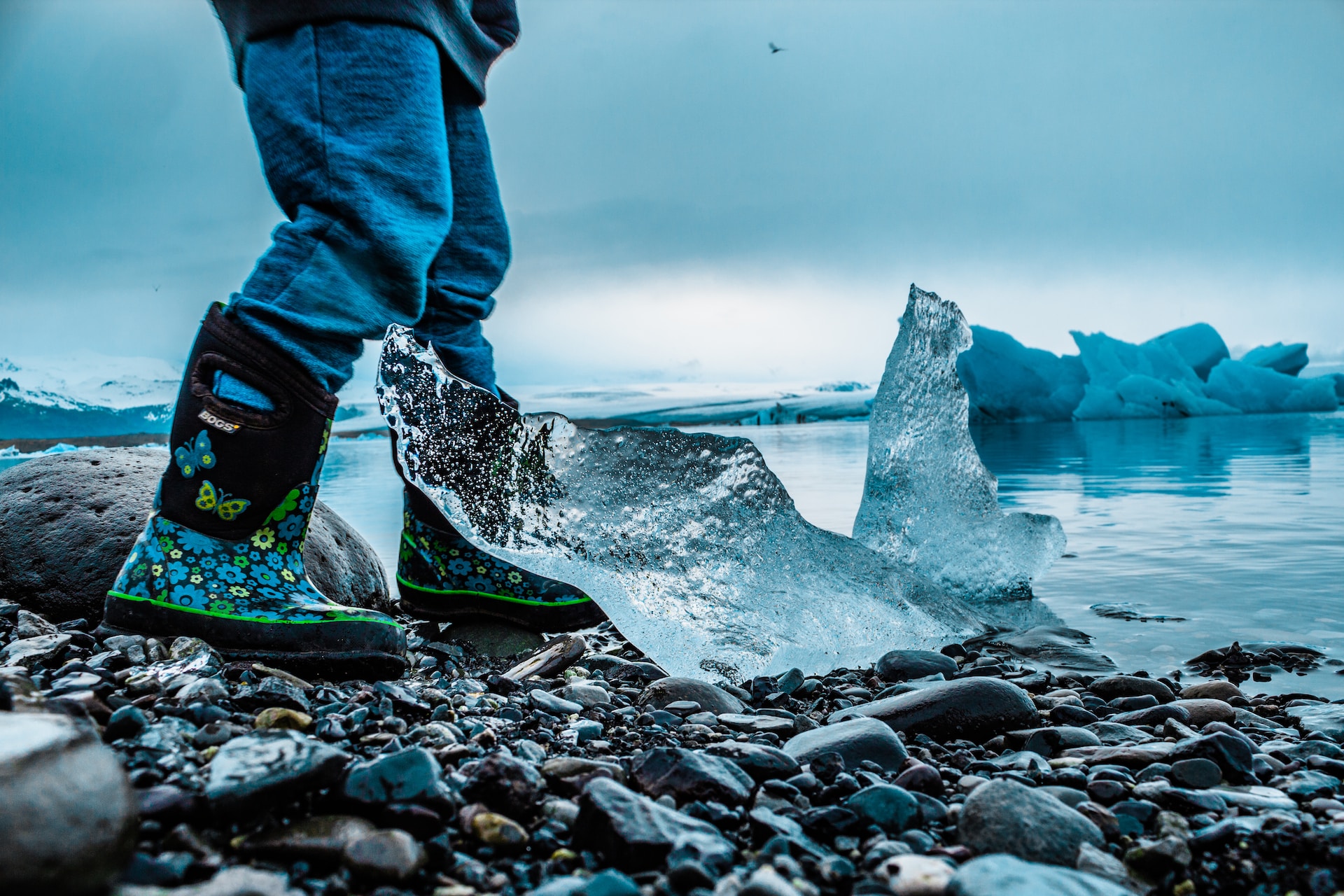Last updated on March 7th, 2024
When it comes to footwear, one of the most important considerations is keeping your feet dry and comfortable. This is especially true for those who spend time outdoors in wet or snowy conditions. Waterproof boots are a popular solution, but the question remains: are waterproof boots waterproof?
What Makes a Boot Waterproof?
Before we can answer that question, let’s take a closer look at what makes a boot waterproof in the first place. There are a few key components that work together to create a waterproof barrier:
Waterproof Membrane
Many waterproof boots feature a membrane layer that is placed between the outer layer and the inner lining. This membrane is designed to repel water while still allowing moisture to escape, keeping your feet dry and comfortable.
Sealed Seams
In addition to the waterproof membrane, waterproof boots also typically feature sealed seams. This means that the stitching on the boots is covered with a waterproof material to prevent water from seeping in.
Waterproof Materials
Finally, the outer layer of waterproof boots is typically made from materials that are inherently waterproof, such as leather or synthetic fabrics that have been treated with a waterproof coating.
When all of these components are working together, you can expect your boots to keep your feet dry in most wet conditions.
Do Hiking Boots Keep Your Feet Dry?
Yes, hiking boots effectively keep your feet dry, especially when equipped with waterproofing technologies.
What Are the Types of Waterproofing in Hiking Boots?
When it comes to hiking boots, waterproofing is a must-have feature. It is a must especially if you plan to go on hikes in wet and rainy conditions. However, not all waterproofing is created equal. Hiking boots offer a range of waterproofing options to cater to different needs.
In this section, we will take a closer look at the different types of waterproofing that are commonly found in hiking boots.
Gore-Tex technology and its work
Gore-Tex is a renowned waterproofing technology used in hiking boots. It’s a membrane that is designed to be breathable and waterproof.
The Gore-Tex membrane consists of tiny pores smaller than water droplets, but larger than sweat molecules. This allows it to keep water out while still allowing air to circulate.
Other waterproofing materials
Apart from Gore-Tex, hiking boots utilize alternative waterproofing materials. These materials include eVent, H2O Proof, and Dri-Tec. This offers similar functionality in terms of waterproofing and breathability. Also, provides a range of options to suit different preferences and needs.
Why Waterproofing New Hiking Boots May Be Beneficial?
Waterproofing your new hiking boots can provide several benefits. This can make your hiking experience more enjoyable. Here are some of the main reasons why waterproofing new hiking boots may be beneficial:
Protection from Moisture and Water
Waterproofing your hiking boots keeps your feet safe and dry from moisture and water. While hiking in the rain or wet areas, there’s a chance your boots might pick up some moisture.
But remember, most hiking boots are designed to dry quickly, so you can keep exploring in comfort. With proper care, you can keep your feet healthy and happy.
Increased Durability
Waterproofing your boots can also increase their durability. When boots encounter water and moisture, they can strengthen and better resist damage.
Waterproofing creates a barrier between the boots and the water. This protects them from damage and extends their lifespan.
Better Traction
Waterproofing your boots can also provide better traction. Waterproof boots can help you stay safe and secure when it’s wet and slippery, giving you better traction and stability. This reduces the risk of slipping and falling.
How to Understand Waterproofing for Hiking Boots?
Understanding waterproofing for hiking boots is crucial when selecting the ideal pair. Waterproof hiking boots employ advanced membranes like Gore-Tex.
This effectively blocks out water, ensuring complete dryness. Water-resistant boots, on the other hand, can only repel water to a certain extent, but not completely.
What makes hiking boots waterproof?
Hiking boots are made waterproof by using a waterproof membrane. The membrane is typically sandwiched between the outer layer and the inner lining. This membrane acts as a barrier that prevents water from entering the boots while allowing moisture to escape.
Difference between water-resistant and waterproof
Water-resistant hiking boots are crafted to repel water effectively to a certain extent. They can effectively repel light rain and splashes.
However, for hiking in heavy rain or crossing streams, waterproof boots are essential. This ensures your feet remain dry and comfortable throughout the journey.
Waterproofing technology
Two popular waterproofing technologies used in hiking boots are Gore-Tex and eVent. Gore-Tex is a waterproof membrane that is highly breathable. Also, it can withstand water pressure up to 28,000 mm.
eVent is another innovative technology that uses a waterproof and breathable membrane. This allows sweat to escape while keeping water out.
What Are the Limitations of Waterproof Boots?
While waterproof boots are designed to keep your feet dry, they do have some limitations that are important to keep in mind.
Water Pressure
One of the most significant limitations of waterproof boots is water pressure. If you are standing in deep water, the pressure from the water can force it through even the most waterproof materials.
Additionally, if you are walking through deep snow, the pressure from your foot can cause snow to enter through the top of your boots. This is why many waterproof boots come with a gaiter or other type of coverage that can be worn over the top of the boot to prevent snow from entering.
Limited Breathability
While waterproof membranes are designed to allow moisture to escape, they still have limited breathability compared to boots without a membrane. This means that your feet may become sweaty and uncomfortable if you are wearing waterproof boots in warm or humid conditions.
Limited Durability

Waterproof boots require special care to maintain their waterproof properties. Over time, the waterproof coating on the outer layer of the boots can wear off, and the waterproof membrane can become damaged. This means that even the most waterproof boots will eventually lose their effectiveness.
Why Choosing the Right Waterproof Boots for Your Needs Is Important
Given these limitations, it’s essential to choose the right waterproof boots for your needs. Here are a few factors to consider:
Activity Level
If you are going to be engaging in high-intensity activities like hiking or running, you will want to choose waterproof boots with good breathability to prevent your feet from becoming too sweaty.
Climate
If you live in a particularly wet or snowy climate, you may want to invest in more heavy-duty waterproof boots with additional insulation to keep your feet warm and dry.
Care and Maintenance
Finally, it’s important to consider the care and maintenance required for your boots. Some boots require regular reapplication of waterproof coatings or other treatments to maintain their effectiveness.
If you’re not willing to put in the effort to maintain your boots, you may want to consider a more durable option.
Read about: Can You Use Regular Boots For Hiking
What Is The Importance of Proper Cleaning and Storage?
- Proper cleaning and storage maintain hiking boots’ waterproofing abilities and longevity.
- Regular maintenance ensures optimal waterproofing performance by preventing dirt and debris.
- Proper moisture management helps maintain material integrity. It prevents mold and mildew growth and ensures long-lasting durability.
- Avoid cramped storage spaces; maintain boot shape by stuffing with newspaper or a boot tree.
- Regular cleaning and proper storage significantly extend hiking boots’ lifespan.
Conclusion
In conclusion, waterproof boots are a fantastic addition to any wardrobe, especially if you live in a rainy or snowy climate. They are designed to keep your feet dry and warm, but it’s important to understand their limitations and take proper care of them.
By choosing the right waterproof boots for your needs and taking proper care of them, you can ensure that they will last you for years to come.
Investing in a good pair of waterproof boots can be expensive, but it is worth it in the long run. When shopping for waterproof boots, do your research, read reviews, and choose a brand that has a reputation for quality and durability.
Don’t be swayed by flashy marketing or trendy designs. Instead, focus on finding a pair of boots that fit well, feel comfortable, and protect your feet from the elements.
Finally, it’s important to remember that waterproof boots are not a substitute for good judgment and common sense. Even the best waterproof boots can only do so much, and if you’re not careful, you can still end up with wet feet. So be smart, be safe, and enjoy your waterproof boots!
FAQs:
Yes, waterproof boots do work to keep your feet dry. However, it’s important to understand that they have their limitations and require proper care to maintain their waterproofing.
Yes, waterproof shoes are designed to keep your feet dry in wet conditions. However, like waterproof boots, they have their limitations and require proper care to maintain their waterproofing.
The length of time that waterproof boots stay waterproof depends on a variety of factors, including the quality of the boots, the conditions they are exposed to, and how well they are taken care of. In general, high-quality waterproof boots should last for several years if they are properly cared for.

Tyler Looney is an avid hiking enthusiast and the author of HikingBootsPros.com, a website dedicated to providing helpful insights and advice on choosing the best hiking boots. His expertise and passion for hiking have made him a valuable resource for both beginner and experienced hikers alike.

